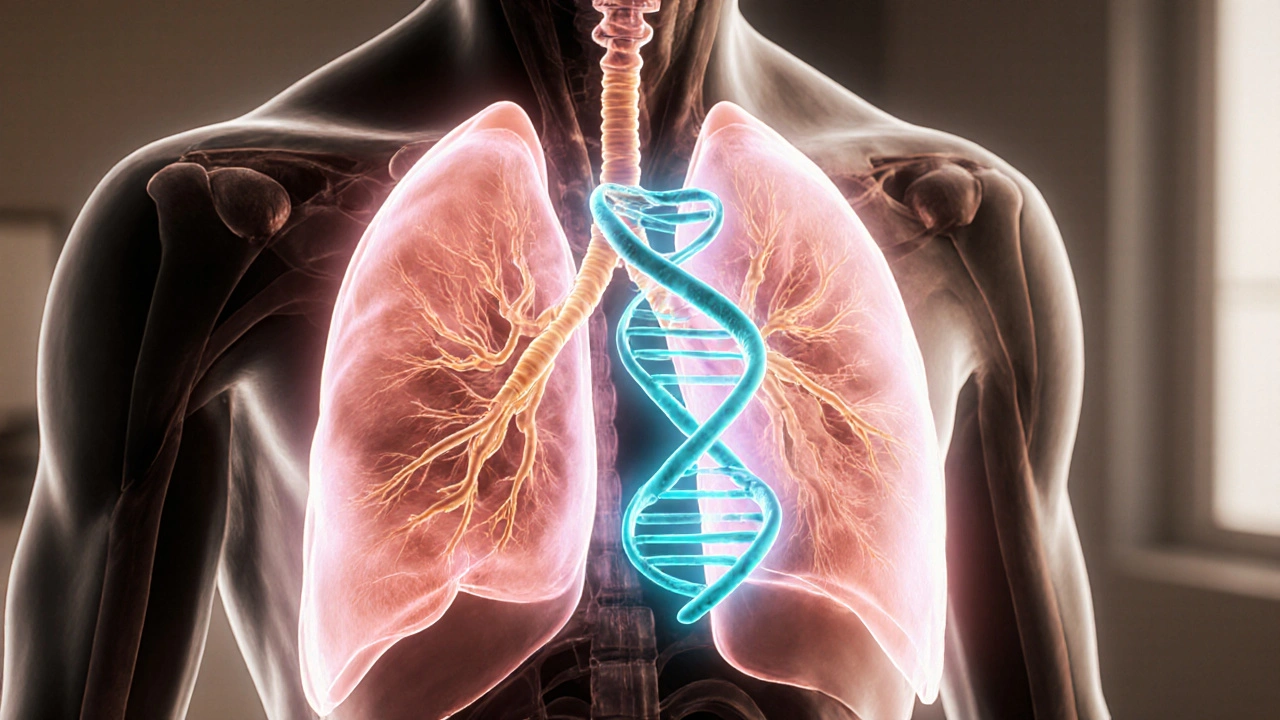Genetic Asthma: Understanding the Inherited Roots and Tailored Care
When talking about genetic asthma, a type of asthma driven by inherited DNA variations that affect airway responsiveness and inflammation. Also known as hereditary asthma, it shows up when family members share certain risk genes. The condition doesn’t appear out of thin air – it blends your genes with what you breathe.
What sets genetic asthma apart is the way your DNA talks to external triggers. asthma genetics, the study of how multiple genes combine to raise asthma risk reveals that no single gene decides your fate; instead, a panel of variants creates a polygenic risk score. That score helps doctors decide if you might benefit from personalized asthma therapy, treatment plans customized to an individual’s genetic makeup, biomarker profile, and exposure history. When a patient’s genes point to heightened airway smooth‑muscle sensitivity, doctors may start with specific inhaled corticosteroids or add a biologic that targets the IL‑5 pathway. If the genetic profile shows a strong eosinophilic signature, a blood test for biomarkers like periostin or FeNO becomes a useful guide. In short, knowledge of genetics steers medication choice, dosing, and even lifestyle advice.
How Testing and Environment Shape Management
Genetic testing for asthma isn’t a one‑time checkbox; it’s a conversation starter. A simple saliva kit can reveal risk alleles in genes such as ORMDL3, IL33, and GSDMB. Those results feed into a risk model that predicts how likely you are to develop severe symptoms or respond to certain drugs. But genetics only tells part of the story. environmental triggers, air pollutants, allergens, and viral infections that provoke airway inflammation interact with your DNA to either amplify or mute symptoms. Knowing both sides lets you create a prevention plan: using air purifiers at home, timing outdoor activities when pollen counts are low, and staying up to date on flu vaccines. For parents of kids with a family history of asthma, early screening and proactive trigger control can delay the onset of chronic symptoms. The triple connection—genetics, biomarkers, and environment—forms the backbone of modern asthma management.
Below you’ll find a curated set of articles that dive deeper into each of these pieces. Some explain how to interpret a polygenic risk score, others compare inhaled corticosteroids with newer biologics, and a few walk you through setting up a trigger‑free home. Whether you’re a patient looking for answers, a caregiver seeking practical tips, or a clinician wanting a quick refresher, the posts ahead cover the full spectrum of genetic asthma knowledge. Use them as a roadmap to turn genetic insight into real‑world relief.
How Genetics Influences Breathing Disorders: Causes, Testing & Treatments
- DARREN LLOYD
- 11
Explore how genetics influences asthma, cystic fibrosis, COPD, and other breathing disorders, covering testing, treatments, and actionable steps for patients.
READ MORE
